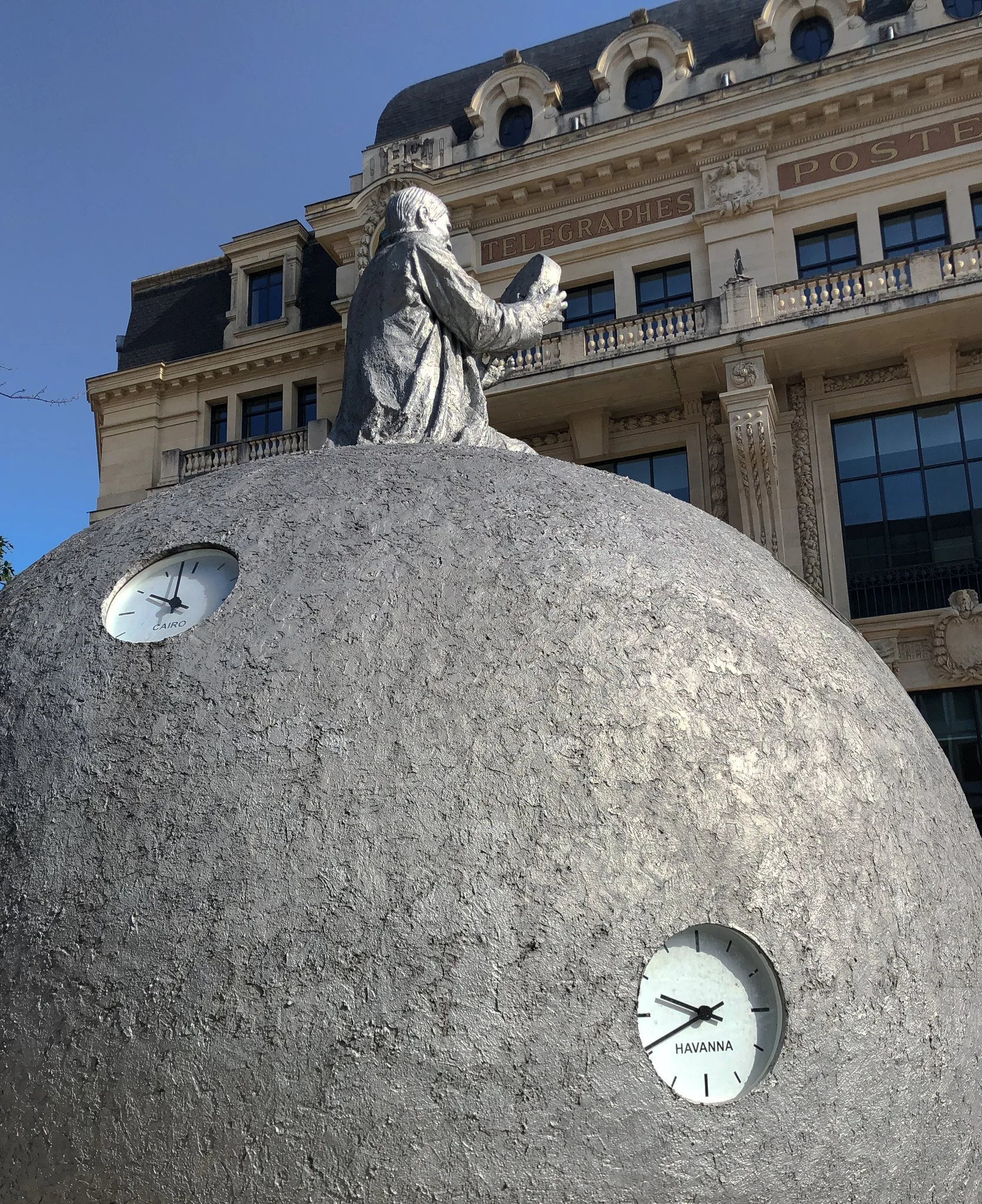Dijon
It beats me as to why my sister and her friends, Sylvia and Victoria stayed here for just one night and the same thing before that. Dijon isn’t a small place and there are historical places to visit here. Well, that’s how they planned their travel. I couldn't fathom this mindset of traveling. Anyway, we made the best of our stay. After lunch, Victoria and I went for a walk in the city and stopped by shops. Then, after dinner, Sylvia and I went for a walk in the center. We followed some parts of the owl’s trail. In conclusion, I will definitely come back here.
"Owl's Trail" (La Chouette de Dijon). This is a famous walking tour that guides visitors through the historic heart of the city using a series of brass plaques embedded in the pavement. These plaques are marked with an owl symbol, leading you to various landmarks and points of interest.
Here are some details about the Owl's Trail:
The Owl: The symbol of the owl comes from a small carving on the Church of Notre-Dame in Dijon. According to local legend, touching the owl with your left hand while making a wish brings good luck.
The Trail: The Owl's Trail is a self-guided walking tour that covers around 22 stops, highlighting Dijon’s main attractions. The trail takes you through charming streets, past historical buildings, and to important cultural sites.
Highlights Along the Trail:
Place François Rude: A lively square with beautiful buildings and a picturesque carousel.
Palace of the Dukes of Burgundy: A key historical and architectural site.
Dijon Cathedral (Saint-Bénigne): A stunning Gothic cathedral.
Church of Notre-Dame: Home to the famous owl carving.
Musée de la Vie Bourguignonne: A museum dedicated to Burgundian life and culture.
Les Halles: Dijon's central market, designed by Gustave Eiffel, offering a variety of local produce and delicacies.
Practical Information:
Map and Guide: You can obtain a map and guide for the Owl's Trail from the Dijon Tourist Office, which provides detailed descriptions of each stop along the route.
Accessibility: The trail is designed to be accessible and enjoyable for all ages, making it a popular activity for tourists and locals alike.
Cultural Significance: The Owl's Trail is not just a tourist attraction but also a way to immerse oneself in the rich history and culture of Dijon. It offers insights into the city's architectural heritage, historical events, and local traditions.
The Owl's Trail is a unique and engaging way to explore Dijon, offering a blend of historical education and interactive fun. If you're visiting Dijon, following the owl symbols on the pavement is a great way to experience the city's charm and heritage.
Dijon is the capital city of the Côte-d'Or department in the Bourgogne-Franche-Comté region of eastern France. Known for its rich history, architectural heritage, and culinary traditions, Dijon is a vibrant city with much to offer.
History:
Ancient and Medieval Periods: Originally a Roman settlement called Divio, Dijon has a history that spans over two millennia. It became the capital of the Duchy of Burgundy in the 11th century, reaching its peak of influence during the reigns of the powerful Dukes of Burgundy.
Renaissance and Beyond: The city flourished during the Renaissance, evidenced by its beautiful mansions and buildings. It has continued to evolve while preserving its historical charm.
Architecture and Landmarks:
Palace of the Dukes of Burgundy: This iconic building now houses the Museum of Fine Arts and the offices of the city hall. It showcases a range of artworks and historical artifacts.
Churches: Dijon is home to several remarkable churches, including Dijon Cathedral (Saint-Bénigne) and the Church of Notre-Dame, known for its intricate façade and the famous owl carving believed to bring good luck.
Medieval and Renaissance Buildings: The city features numerous preserved half-timbered houses and elegant mansions from the Renaissance period.
Cultural Heritage:
Museums: In addition to the Museum of Fine Arts, Dijon has several other museums, such as the Musée Magnin and the Musée de la Vie Bourguignonne, which explore local history and culture.
Festivals and Events: Dijon hosts various cultural events throughout the year, including the International Gastronomy Fair, one of the largest food fairs in France, and the Dijon International and Gastronomic Film Festival.
Gastronomy:
Mustard: Dijon is internationally renowned for its mustard, a staple in French cuisine. The city's mustard makers have been perfecting their craft for centuries.
Wine: Located near the Burgundy wine region, Dijon is an excellent starting point for exploring the famous vineyards of the Côte de Nuits and Côte de Beaune.
Cuisine: Local dishes include specialties like coq au vin, boeuf bourguignon, and escargots de Bourgogne, all of which can be enjoyed in the city's many restaurants and bistros.
Education and Research:
University of Burgundy: Dijon is home to the University of Burgundy, which is a major center for higher education and research in the region.
Research Institutes: The city also hosts several research institutes, contributing to advancements in various fields.
Transportation:
Accessibility: Dijon is well-connected by train, including high-speed TGV services that link the city to Paris, Lyon, and other major cities. The A31 and A39 motorways also provide easy road access.
Public Transport: The city's public transport system includes buses and a modern tramway network, making it easy to navigate.
Economy:
Diverse Sectors: Dijon's economy is diverse, with strengths in food production, pharmaceuticals, education, and research. The city also benefits from tourism, driven by its historical sites and gastronomy.
Dijon offers a unique blend of historical heritage, cultural richness, and culinary excellence, making it a fascinating destination for visitors and a vibrant place to live for its residents.
